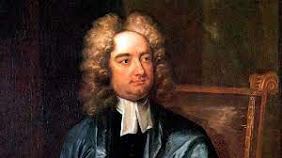This blog is a thinking activity assigned to us by Vaidehi ma’am. I shall try to answer the questions to the best of my ability.
Compare the general characteristics of the Elizabethan age and the Neoclassical age.
The Elizabethan Age and the Neoclassical Age are two major periods in English literature, separated by about a century. They are often contrasted with each other, as they represent two very different approaches to art and literature. The Elizabethan Age emphasised individualism and humanism, producing great works of literature and art, while the Neoclassical Age focused on reason, order, and moral themes, drawing inspiration from classical Greek and Roman works.
The Elizabethan Age, spanning from 1558 to 1603 during the reign of Queen Elizabeth I, is renowned for its flourishing of literature, drama, exploration, and artistic expression. It was a time of great intellectual and artistic ferment. This period witnessed the emergence of illustrious playwrights like William Shakespeare and Christopher Marlowe, who created enduring works that explored the complexity of human nature. In this age, great emphasis on emotion and imagination is seen.
The Elizabethan age was a celebration of individualism and humanism. This was a time when intellectual inquiry was prized. Humanism, with its emphasis on the potential and dignity of the individual, influenced the arts, sciences, and politics of the period. The arts were marked by diversity and experimentation, as seen in the variety of theatrical genres and the mixing of styles from different cultures.
On the other hand, the Neoclassical Age, spanning roughly from 1660 to 1798, was a response to the preceding age’s exuberance and embraced a more rational and ordered approach. The Neoclassicists looked back to the ancient Greeks, and Romans for inspirations and emphasized order, reason and restraint in their art. They sought to restore artistic order and structure, often adhering to strict rules and forms. They believed that art should be used to teach and to improve society. They rejected the Elizabethan emphasis on emotion and imagination.
Neoclassical literature and art aimed for clarity, balance, and moral purpose. Writers like Alexander Pope and Jonathan Swift employed satire to criticize society’s follies, reflecting the era’s emphasis on social reform. This period also saw the rise of the novel as a prominent literary form, with authors like Samuel Richardson and Henry Fielding contributing to its development. The Neoclassical period imitated the classical works of the past, while also incorporating reason and rationality.
An example of how differences are seen in literature can be observed through their plays. In the Elizabethan Age, plays were often full of violence, spectacle, and supernatural elements. They were made for entertainment purposes and their only goal was to attract an audience. In contrast, Neoclassical plays were typically more restrained and realistic. They were made for preaching purposes and their goal was to teach people morality.
The table presented below shows the key differences between the two period:-
In conclusion, the Elizabethan Age and the Neoclassical Age represent two distinct yet interconnected periods in English history. The former celebrated individualism, exploration, and artistic diversity, while the latter embraced reason, order, and classical influences.
For more information on both these ages you could check out the following videos:-
Favourite Writer and Favourite Text from Neoclassical age:
Recently I discovered the writings of Jonathan Swift and I could not help myself but admire his works. As a Neoclassical writer, his works put emphasis on reason, order and moral purpose. His works exhibit profound insights into human nature and societal flaws. Through works like “Gulliver’s Travels” and his satirical essays, Swift skilfully employed classical forms and rational thought. He possesses a remarkable ability to blend humour with critique.
One text that I admire the most from the Neoclassical age also comes from the pen of Jonathan Swift. His remarkable 4 part novel, Gulliver’s Travels, is truly a masterpiece. For more information on this work click here.
Difference between Jonathan Swift and writers from Elizabethan Age :-
Jonathan Swift was more interested in social and political satire. His works did not explore love, death and the supernatural like writers of Elizabethan age. He also used formal and balanced style and was not experimental. He was more concerned with the moral and ethical implication of his writing then the aesthetic beauty of his language.
Difference between Jonathan Swift and writers from Romantic Age :-
Jonathan Swift also differed from the writers of the Romantic age. He was not interested in the individual and the emotions as the romantics were and was more skeptical of human nature and more critical of society. His work was dark and pessimistic rather than the optimistic, idealistic works of the romantics.


Comments
Post a Comment